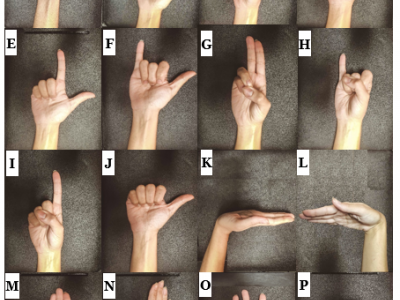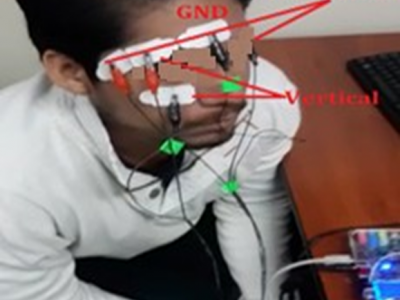Biophysiological Signals
The data set is collected using Neurosky MindWave 2.0 Headset. It uses a single dry electrode placed at FP-1 position for the acquisition of EEG signals. The data is collected from Healthy Individuals and Epileptic Patients performing different Activities of Daily Living (ADLs) in an unconstraint environment.
- Categories:
 1483 Views
1483 ViewsThe data acquisition process begins with capturing EEG signals from 20 healthy skilled volunteers who gave their written consent before performing the experiments. Each volunteer was asked to repeat an experiment for 10 times at different frequencies; each experiment was trigger by a visual stimulus.
- Categories:
 35872 Views
35872 ViewsUniversity level education is in constant evolution, making use of technological advancements in order to provide high quality pedagogical instruction to students. An important aspect of modern education is the contribution of Information Technologies,
as different technological resources can be implemented to provide education under a variety of teaching modalities. New learning modalities using modern technologies, such as dynamic lectures using live feedback from the students through wireless
- Categories:
 1621 Views
1621 Views
A wide range of wearable sensors exist on the market for continuous physiological health monitoring. The type and scope of health data that can be gathered is a function of the sensor modality. Blumio presents a dataset of synchronized data from a reference blood pressure device along with several wearable sensor types: PPG, applanation tonometry, and the Blumio millimeter-wave radar. Data collection was conducted under set protocol with subjects seated at rest. 115 study subjects were included (age range 20-67 years), resulting in over 19 hours of data acquired.
- Categories:
 3657 Views
3657 ViewsRecently, surface electromyography (sEMG) emerged as a novel biometric authentication method. Since EMG system parameters, such as the feature extraction methods and the number of channels, have been known to affect system performances, it is important to investigate these effects on the performance of the sEMG-based biometric system to determine optimal system parameters.
- Categories:
 1506 Views
1506 ViewsThe electrodes are sensors capable of reading EMG signals or ocular myoelectric activity during eye movements [1]. For this purpose, two vertical electrodes and two horizontal electrodes were used, with a reference electrode on the forehead (See the figure). 10 subjects performed 10 pseudo-random repetitions of each of the following eye movements during the experiment: Up, Down, Right, Left, no movement (fixation in the center) and blinking.
- Categories:
 89236 Views
89236 ViewsThe UBFC-Phys dataset is a public multimodal dataset dedicated to psychophysiological studies. 56 participants followed a three-step experience where they lived social stress through a rest task T1, a speech task T2 and an arithmetic task T3. During the experience, the participants were filmed and were wearing a wristband that measured their Blood Volume Pulse (BVP) and ElectroDermal Activity (EDA) signals. Before the experience started and once it finished, the participants filled a form allowing to compute their self-reported anxiety scores.
- Categories:
 28563 Views
28563 Views
We develop a potential biomarker to subdivide the stress groups into eustress and distress groups using hemodynamic responses of functional near-infrared spectroscopy (fNIRS). We stimulate two stress groups divided by saliva alpha-amylase (sAA) with an international affective picture system (IAPS) inducing positive or negative emotions and measure hemodynamic responses at the same time. As a result, we have developed a newly designed biomarker using fNIRS.
- Categories:
 467 Views
467 ViewsThis is two-part open-access webpage of 'Data:B-Bio Models'.This webpage contains datasets of 'Computational Biology'and Novel ß-Bio models, project folders, with clinical and pharmacy investigation in simulation, proposed by me which are Self-Claimed advancements, in support of my Research claims, discoveries, presentations and books. All content can be freely downloaded after sign-up.
- Categories:
 3966 Views
3966 Views
Electroretinography (ERG) has great potential in visual health detection in early diagnosis and intervention. To date, optical coherence tomography and other diagnostic tests are mainly used. Clinically used ERG is an important diagnostic assessment for various retinal diseases, such as hereditary diseases (retinitis pigmentosa, choroideremia, cone dystrophy, etc), diabetic retinopathies, glaucoma, macular degeneration, toxic retinopathies etc. A database of five types of adult and pediatric biomedical electroretinography signals is presented in this study.
- Categories:
 2312 Views
2312 Views




